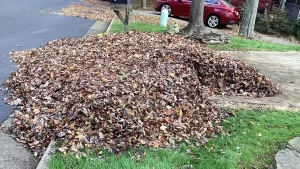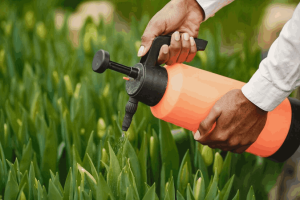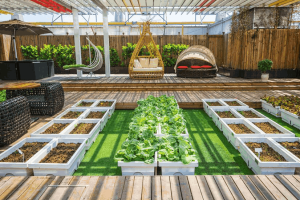Welcome to “The Ultimate Guide to Stunning Landscapes: A Comprehensive Look at Lawn Care & Landscaping”! Your outdoor space is a canvas waiting to be transformed into a breathtaking masterpiece, and we’re here to guide you through every step of the journey. A well-maintained landscape not only enhances the beauty of your property but also contributes to its overall value and curb appeal. Whether you’re a seasoned gardener or a novice looking to embark on your first landscaping adventure, this comprehensive guide is tailored to meet your needs.
In the bustling world we live in, creating and maintaining a stunning landscape might seem like a daunting task. Fear not! This guide breaks down the art and science of landscaping into easily digestible chapters, providing you with the knowledge and tools to turn your outdoor space into a haven of natural beauty.
We’ll start by helping you understand your unique landscape, considering factors such as soil type, sunlight exposure, and regional climate. From there, we’ll guide you through the exciting process of designing your dream landscape, striking the perfect balance between hardscape and softscape elements. As we delve into essential lawn care practices and explore sustainable landscaping options, you’ll gain insights into creating not just a beautiful but also a eco-friendly outdoor oasis.
Whether you’re interested in tackling do-it-yourself projects, exploring advanced landscaping techniques, or simply learning how to maintain your investment throughout the seasons, this guide has got you covered. Get ready to embark on a journey that will not only elevate the aesthetics of your surroundings but also deepen your connection to the natural world. Let’s dive into the art of landscaping and cultivate stunning landscapes that reflect your unique style and love for the great outdoors.
Understanding Your Landscape
Understanding your landscape is the fundamental first step towards creating a breathtaking outdoor space. A deep appreciation for the unique characteristics of your property sets the stage for informed decision-making and successful landscaping endeavors. To embark on this journey, start by assessing key elements within your landscape.
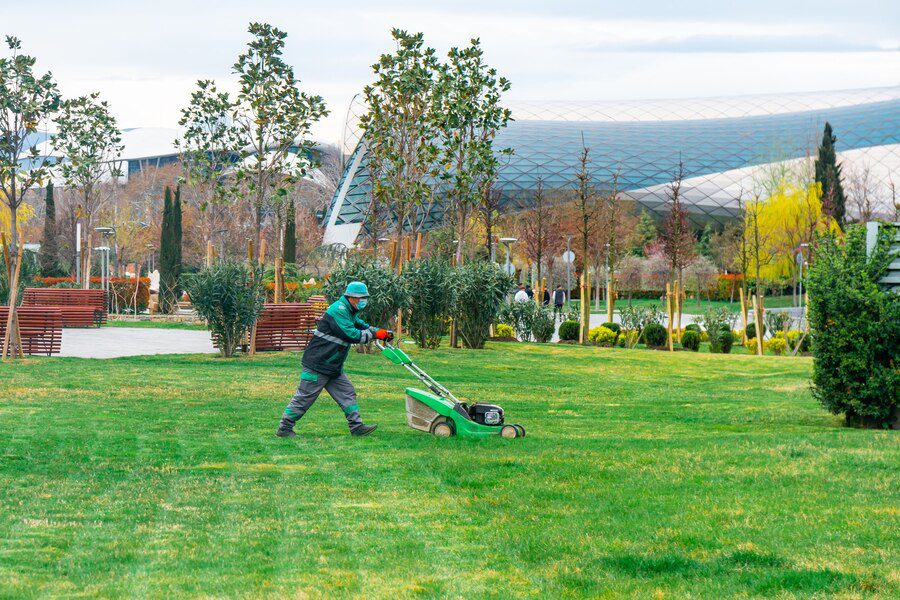
One crucial aspect is identifying the soil types and conditions prevalent in your yard. Different plants thrive in different soil compositions, so understanding the soil profile allows you to choose vegetation that will flourish. Equally important is analyzing sunlight exposure throughout the day. Recognizing areas with full sun, partial shade, or deep shade aids in optimal plant placement, ensuring they receive the right amount of sunlight for growth.
Consideration of climate and regional factors is another pivotal element in landscape comprehension. Understanding the local climate helps in selecting plants that are well-suited to thrive in your specific environment. Moreover, being aware of regional weather patterns allows for strategic planning to protect your landscape during adverse conditions.
By taking the time to assess these foundational components, you lay the groundwork for a landscape that not only survives but thrives. This understanding not only influences plant selection but also informs decisions related to hardscaping, irrigation, and overall design. Armed with this knowledge, you can tailor your landscaping efforts to suit the natural characteristics of your property, resulting in a harmonious and enduring outdoor space.
Designing Your Dream Landscape
Designing your dream landscape is an exhilarating process that transforms your outdoor space into a visually stunning and functional haven. This chapter explores the key considerations and steps involved in creating a landscape that aligns with your aesthetic preferences and lifestyle.
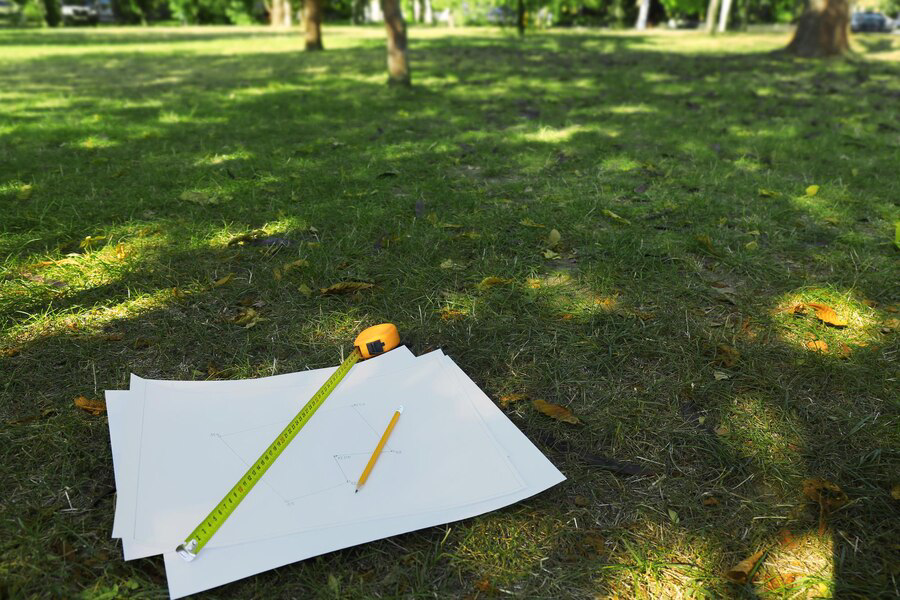
I. Planning Your Landscape Layout
- Assessing Your Needs and Desires
- Identify specific activities or features you want in your landscape (e.g., outdoor dining, play areas, garden beds).
- Consider any practical needs, such as storage or utility areas.
- Focal Points and Zones
- Integrate focal points like a water feature, sculpture, or striking tree.
- Define zones for different purposes, creating a sense of organization and flow.
- Balancing Hardscape and Softscape Elements
- Determine the right mix of hardscaping (patios, walkways) and softscaping (plants, flowers) for a harmonious look.
- Ensure that hardscape elements complement the overall design without overshadowing greenery.
II. Choosing Suitable Plants and Trees
- Climate Considerations
- Select plants and trees that thrive in your local climate and are suitable for your hardiness zone.
- Consider native plants for ecological benefits and resilience.
- Seasonal Interest
- Plan for year-round visual interest with a mix of plants that bloom and exhibit attractive foliage in different seasons.
- Explore various textures, colors, and heights for a dynamic landscape.
- Maintenance Requirements
- Factor in the time and effort you’re willing to invest in maintenance when selecting plants.
- Balance high-maintenance choices with low-maintenance alternatives for sustainable landscaping.
III. Budget Considerations for Landscaping Projects
- Setting a Realistic Budget
- Assess the financial scope of your landscaping project.
- Prioritize essential elements and allocate funds accordingly.
- DIY vs. Professional Services
- Determine which aspects you can handle as do-it-yourself projects and where professional expertise may be necessary.
- Obtain multiple quotes from landscaping professionals to make informed decisions.
By focusing on these crucial aspects, you lay the foundation for a landscape design that not only meets your aesthetic vision but also aligns with the practical needs of your lifestyle and property. This thoughtful planning ensures that your dream landscape is not only visually stunning but also a functional and enjoyable extension of your home.
Sustainable Landscaping Practices
Sustainable landscaping practices not only contribute to the health of the environment but also promote a resilient and eco-friendly outdoor space. Here are some key sustainable landscaping practices to consider:
- Xeriscaping:
- Xeriscaping involves designing a landscape that requires minimal water, making it well-suited for regions prone to drought. This practice typically incorporates drought-resistant plants, efficient irrigation systems, and mulching to reduce water evaporation.
- Native Plants:
- Choose plants native to your region. Native plants are adapted to the local climate and soil conditions, requiring less water, fertilizer, and pesticides. They also support local ecosystems by providing habitat and food for native wildlife.
- Composting and Mulching:
- Implement composting to recycle organic waste from your yard and kitchen. Compost enriches the soil with essential nutrients, improves water retention, and reduces the need for chemical fertilizers. Mulching around plants helps control weeds, conserve moisture, and regulate soil temperature.
- Rainwater Harvesting:
- Install rain barrels or cisterns to collect rainwater from roofs. This harvested rainwater can then be used for watering plants, reducing the demand on municipal water supplies and lowering water bills.
- Permeable Hardscapes:
- Choose permeable materials for driveways, walkways, and patios. Permeable hardscapes allow rainwater to penetrate the soil, preventing runoff and promoting groundwater recharge.
- Integrated Pest Management (IPM):
- Adopt an Integrated Pest Management approach to control pests. This involves using a combination of biological controls, beneficial insects, and environmentally friendly pest control products to minimize the impact on the ecosystem.
- Energy-Efficient Lighting:
- Use energy-efficient outdoor lighting, such as LED fixtures, solar-powered lights, or low-voltage systems. This reduces energy consumption and contributes to a more sustainable landscape.
- Wildlife-Friendly Design:
- Design your landscape to attract and support local wildlife. This can include planting native flowers that attract pollinators, providing bird feeders and bird baths, and incorporating habitat features like nesting boxes.
- Organic Lawn Care:
- Embrace organic lawn care practices, avoiding synthetic fertilizers and pesticides. Use natural alternatives and focus on building healthy soil through aeration, overseeding, and topdressing with compost.
- Smart Irrigation Systems:
- Install smart irrigation systems that adjust watering schedules based on weather conditions and soil moisture levels. This prevents overwatering and ensures efficient use of water resources.
By integrating these sustainable landscaping practices, you not only create a visually appealing outdoor space but also contribute to environmental conservation and long-term ecosystem health.
Seasonal Maintenance Guide
A well-maintained landscape requires attentive care throughout the changing seasons. Each season brings its unique challenges and opportunities for nurturing the health and beauty of your outdoor space. This Seasonal Maintenance Guide offers a roadmap to help you adapt your landscaping practices accordingly.
1. Spring Awakening: March to May
Tasks:
- Clean-Up: Remove debris and fallen leaves, allowing for proper sunlight and air circulation.
- Pruning: Trim overgrown branches and deadwood to encourage new growth.
- Fertilization: Apply a balanced fertilizer to replenish soil nutrients after winter.
Focus Areas:
- Lawn Care: Aerate the soil, overseed if necessary, and address any winter damage.
- Planting: Introduce new plants and flowers, taking advantage of the optimal growing conditions.
2. Summer Splendor: June to August
Tasks:
- Watering: Establish a consistent watering schedule to combat summer heat stress.
- Pest Control: Monitor for pests and implement control measures as needed.
- Mulching: Apply a layer of mulch to retain soil moisture and suppress weeds.
Focus Areas:
- Floral Flourish: Deadhead flowers to promote continuous blooming.
- Hardscape Inspection: Check for any damage or wear on pathways, patios, and other hardscape features.
3. Autumn Transformation: September to November
Tasks:
- Leaf Removal: Regularly clear fallen leaves to prevent suffocation and promote healthy grass.
- Pruning: Trim back perennials and shape shrubs before winter.
- Fertilization: Apply a fall-specific fertilizer for root development.
Focus Areas:
- Planting: Take advantage of cooler temperatures to plant trees, shrubs, and bulbs.
- Winter Preparation: Insulate plants, wrap delicate shrubs, and prepare irrigation systems for colder months.
4. Winter Rest: December to February
Tasks:
- Snow Removal: Keep pathways and driveways clear of snow to prevent accidents.
- Winter Pruning: Prune dormant trees for shape and structure.
- Equipment Maintenance: Service and store landscaping tools and machinery.
Focus Areas:
- Planning: Use this downtime to plan and envision any changes or improvements for the upcoming spring.
- Bird Feeding: Provide food for local wildlife, contributing to the ecosystem even in colder months.
Adapting your landscaping efforts to the changing seasons ensures that your outdoor space remains vibrant, healthy, and resilient year-round.
As we wrap up this comprehensive guide to stunning landscapes and effective lawn care, it’s clear that creating and maintaining a beautiful outdoor space requires a combination of knowledge, effort, and dedication. Understanding your landscape sets the stage for informed decision-making, enabling you to tailor your efforts to the unique characteristics of your property.
Remember, your landscape is an investment that goes beyond curb appeal. A well-maintained outdoor space adds value to your property, enhances your quality of life, and fosters a connection with nature. From the initial design phase to the ongoing maintenance, each step plays a crucial role in achieving the ultimate goal of a breathtaking landscape.
For those seeking professional assistance in turning their landscaping visions into reality, consider reaching out to Precision Lawn and Landscape. Located at 8193a Euclid Ct, Manassas Park, VA 20111, their team of experts is dedicated to providing top-notch landscaping services. You can contact them at 703-244-64078. Serving the city of Manassas and beyond in the state of Virginia, Precision Lawn and Landscape stands as a testament to the commitment to precision and excellence in outdoor design and maintenance.
Ready to transform your landscape into a stunning masterpiece? Don’t hesitate to contact Precision Lawn and Landscape today. Whether you’re starting from scratch, looking to revitalize your existing outdoor space, or seeking professional guidance on maintenance, their team is equipped with the expertise and dedication needed to bring your landscaping dreams to life.
Give them a call at 703-244-64078 or visit their location at 8193a Euclid Ct, Manassas Park, VA 20111. Let Precision Lawn and Landscape be your trusted partner in creating and maintaining a landscape that not only reflects your style but also stands the test of time. Elevate your outdoor living experience with Precision Lawn and Landscape – where precision meets perfection.

